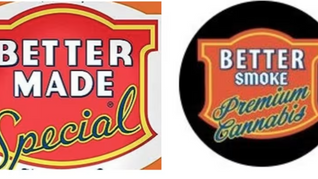Study Links Alcohol Use to Escalating Cannabis Vaping Among Youth
Research from UTHealth Houston, published in Social Science & Medicine, reveals that alcohol use is the strongest predictor of cannabis vaping initiation and escalation among youth and young adults.
This trend persists across demographic groups, raising public health concerns about substance use and its implications.

OG Article: here
View our Fair Use Policy: here
Key Findings
Cannabis Vaping on the Rise
In just a decade, cannabis vaping among youth has surged from 10% to 75%.
Cannabis vaping involves using electronic devices to inhale tetrahydrocannabinol (THC) in liquid form, often derived from concentrated cannabis.
Alcohol as a Gateway Substance
Alcohol use consistently predicted cannabis vaping initiation, even when controlling for demographics.
Researchers emphasized the need for early interventions targeting alcohol consumption to delay substance use initiation.
Demographic Insights
Ethnic and Racial Groups: Non-Hispanic Black youth had a significantly higher risk of progressing from non-use to experimenting with cannabis vaping compared to non-Hispanic White and other groups.
Mental Health: Depression was a predictor of cannabis vaping initiation among Hispanic and non-Hispanic Black youth. Anxiety was also evaluated but less strongly correlated.
Health and Legal Risks
Cannabis vaping in youth can impair cognitive development, affecting learning, memory, and attention.
Risks include chronic pulmonary damage from unregulated THC products, increased dependence, and legal consequences under federal cannabis prohibitions.
Study Overview
Participants and Methods
Data were collected from middle and high school students in Dallas/Fort Worth, San Antonio, Austin, and Houston between 2019 and 2021.
Students were surveyed on their cannabis vaping habits, alcohol and nicotine use, and mental health indicators.
Behavioral Patterns
Baseline Data:
72.7% reported never using cannabis vapes.
12.7% had experimented with cannabis vaping.
14.5% were current users.
Over three years, alcohol emerged as a consistent predictor of cannabis vaping experimentation and escalation.
Implications for Public Health
Comprehensive Interventions
Prevention efforts must address multiple substances, including alcohol, nicotine, and cannabis.
Educational programs in schools should integrate discussions on these substances to delay initiation and reduce addiction risks.
Targeted Support for Vulnerable Groups
Public health strategies should consider racial and ethnic disparities in substance use.
Mental health resources addressing depression and anxiety are critical for mitigating cannabis vaping risks.
Policy Considerations
With cannabis vaping becoming increasingly popular among youth, policies should focus on regulating access to alcohol and cannabis products.
Enhanced monitoring of black-market THC products could reduce health risks associated with contaminated or unregulated substances.
Expert Commentary
Dr. Dale Mantey, assistant professor at UTHealth Houston, emphasized the importance of prevention:
“If we know what predicts that behavior, those are the things we can try to target for addressing and preventing cannabis vaping among youth. The ultimate goal is to delay initiation of substances in youth because the later someone initiates a substance, the less likely they are to become addicted to it.”
This study underscores the critical need for integrated approaches to address substance use among youth, focusing on both behavioral and structural determinants of health.





Comentários